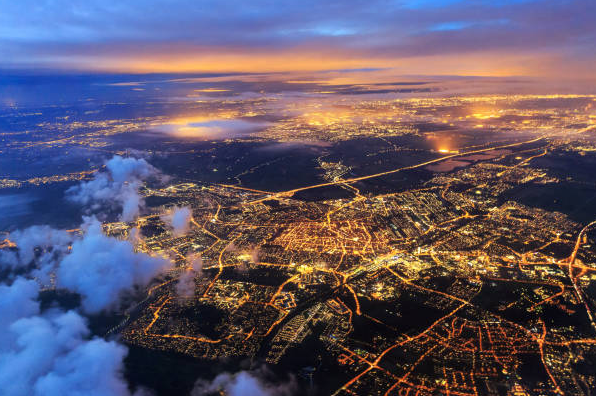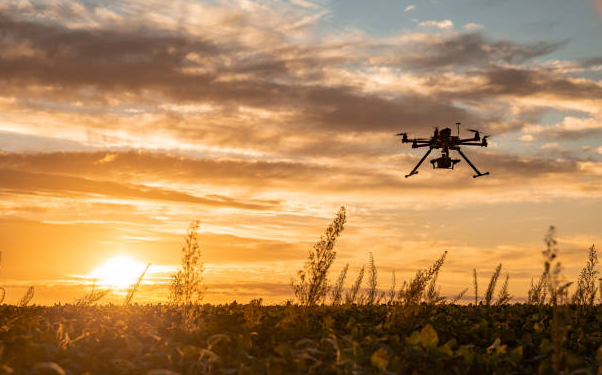Drone photography and videography involve capturing images and videos using remotely operated unmanned aerial vehicles (UAVs) equipped with high-resolution cameras. These drones provide a bird’s-eye view and allow photographers and videographers to explore unique angles and perspectives that were once only accessible through expensive equipment like helicopters or cranes.
1. The Benefits of Drone Photography and Videography
1 Enhanced Visual Appeal
Drone imagery adds a touch of grandeur and awe to your business trips. By showcasing your products, services, or locations from an elevated viewpoint, you can create visually stunning content that captures the attention of your audience. The aerial perspective offers a fresh and captivating way to present your offerings, making them more appealing and memorable.
2 Unique and Engaging Content
In a world saturated with mundane visuals, drone photography and videography provide an opportunity to differentiate your business. Aerial shots create a sense of excitement and curiosity, allowing you to stand out from competitors who rely on traditional ground-level photography. The unique perspective provided by drones helps to engage viewers and leave a lasting impression.
3 Versatility and Flexibility
Drones can be used in various settings and industries, making them a versatile tool for capturing captivating visuals. Whether you’re in real estate, travel and tourism, event management, or construction, drone photography and videography can elevate your marketing efforts. With their ability to maneuver quickly and access hard-to-reach locations, drones offer flexibility in capturing the perfect shot.
2. Applications of Drone Photography and Videography in Business
1 Real Estate and Property Marketing
Drone photography has revolutionized the way real estate properties are marketed. Aerial footage allows potential buyers to get a comprehensive view of the property, its surroundings, and nearby amenities. It provides a clear understanding of the property’s layout, size, and unique features, enticing potential buyers and increasing the chances of a successful sale.
2 Travel and Tourism Promotion
When it comes to promoting destinations and tourist attractions, drone photography and videography offer unparalleled opportunities. By showcasing breathtaking aerial views of landscapes, landmarks, and attractions, you can create compelling promotional material that entices travelers to visit. Drones capture the essence of a location, immersing viewers and inspiring them to explore.
3 Event Coverage and Marketing
From corporate conferences to music festivals, capturing the atmosphere and scale of an event is crucial for effective marketing. Drones provide a dynamic and immersive perspective, allowing you to showcase the event’s magnitude and excitement. Aerial shots can be incorporated into event highlight reels, promotional videos, and social media content, generating buzz and attracting attendees.
4 Construction and Infrastructure Development
In the construction industry, drone photography and videography offer immense value. Drones can survey construction sites, providing up-to-date aerial views that help monitor progress, identify potential issues, and streamline project management. By capturing aerial footage, construction companies can also showcase completed projects, demonstrating their capabilities to potential clients.
5 Advertising and Branding
To create impactful advertising campaigns, businesses need captivating visuals that grab attention. Drone photography and videography enable the creation of stunning imagery for print, digital, and TV advertisements. Aerial shots can highlight product features, showcase the scale of operations, or even capture unique perspectives that symbolize the brand’s values and aspirations.
3. Preparing for Drone Photography and Videography
1 Familiarize Yourself with Local Regulations
Before taking your drone for a flight, it’s essential to understand and comply with local regulations. Different countries and regions may have specific rules regarding drone usage, including flight restrictions, altitude limits, and privacy concerns. Familiarize yourself with these regulations to ensure a safe and legal drone operation.
2 Choose the Right Equipment
Selecting the appropriate drone and camera equipment is crucial for capturing high-quality aerial footage. Consider factors such as camera resolution, stability features, flight time, and ease of use when choosing your equipment. Investing in a reliable and capable drone will help you achieve professional-looking results.
3 Plan and Scout the Location
Before the shoot, spend time planning and scouting the location to identify potential obstacles or interesting features to capture. Understanding the landscape and the shots you want to achieve will streamline your workflow and increase the chances of capturing stunning visuals. Take note of any safety hazards or no-fly zones that may affect your drone operation.
4 Weather Conditions and Safety Considerations
Weather conditions play a significant role in drone photography and videography. Wind, rain, or extreme temperatures can impact flight stability and compromise the quality of your shots. Always check the weather forecast before flying your drone and avoid unfavorable conditions. Additionally, prioritize safety by flying in open areas, away from people, buildings, and power lines.
4. Capturing Stunning Aerial Shots

1 Framing and Composition
When framing your aerial shots, consider the principles of photography composition. The rule of thirds, leading lines, and symmetry can be effectively utilized to create visually appealing images. Experiment with different angles and perspectives to find the most captivating compositions.
2 Utilizing Movement and Perspective
Drones offer the advantage of dynamic movement and perspective. Take advantage of this by incorporating movements like tilting, panning, or flying in different directions to add visual interest to your footage. Experiment with different flight paths and speeds to create captivating cinematic sequences.
3 Lighting and Time of Day
Lighting plays a crucial role in photography, and drone photography is no exception. Golden hours, which are the first and last hours of sunlight, provide soft and warm lighting conditions, adding a touch of magic to your shots. Experiment with different times of day and lighting conditions to capture the desired mood and ambiance.
4 Editing and Post-Processing
After capturing your aerial shots, post-processing is essential to refine and enhance the final visuals. Use photo and video editing software to adjust the exposure, color grading, and sharpness of your images. Additionally, consider adding transitions, music, and captions to your videos to create a polished and professional end product.
5. Maximizing the Impact of Drone Content
1 Sharing on Social Media Platforms
To maximize the reach and engagement of your drone content, leverage social media platforms. Platforms like Instagram, Facebook, and YouTube offer an ideal space to showcase your aerial visuals. Use appropriate hashtags, captions, and engaging descriptions to attract viewers and encourage sharing.
2 Integrating Drone Footage in Video Marketing
Video marketing has become increasingly popular, and drone footage can elevate the quality and impact of your videos. Incorporate aerial shots in promotional videos, product demos, or behind-the-scenes content to create a visually captivating narrative that resonates with your target audience.
3 Incorporating Drone Images in Website Design
When designing your business website, consider incorporating drone images to enhance its visual appeal. Aerial shots can be used as background images, banners, or as part of your portfolio to showcase your work. The unique perspective provided by drone photography will leave a lasting impression on website visitors.
4 Collaborating with Influencers and Content Creators
Partnering with influencers and content creators who specialize in drone photography and videography can significantly amplify your brand’s reach. Collaborate with them to create compelling visual content that showcases your products, services, or locations. Their expertise and established audience can help you gain exposure and attract new customers.
7. Overcoming Challenges in Drone Photography and Videography
1 Battery Life and Flight Time Limitations
One of the limitations of drone photography and videography is the limited flight time due to battery life. To overcome this challenge, ensure you have spare batteries and plan your shoots accordingly. Maximize flight time by optimizing camera settings and flying efficiently to capture all the desired shots within the available time.
2 Wind and Weather Interruptions
Unpredictable weather conditions, including strong winds, can impact the stability and safety of drone flights. Monitor weather forecasts and avoid flying during adverse weather conditions. If wind gusts are present, adjust your flight altitude and flight path accordingly to maintain stability and reduce the risk of accidents.
3 Legal and Safety Concerns
Drone operations are subject to regulations and guidelines imposed by aviation authorities and local authorities. Ensure that you comply with these rules to avoid legal issues and ensure the safety of people and property. Stay informed about any changes or updates in regulations to maintain a responsible and compliant drone operation.
8. Conclusion
Drone photography and videography have revolutionized the way businesses capture and showcase visuals. By leveraging aerial perspectives, businesses can create captivating content that engages their audience and sets them apart from the competition. Whether it’s for real estate marketing, travel promotion, event coverage, or branding, drones offer limitless possibilities for enhancing your business trips.
Investing in the right equipment, planning your shoots diligently, and adhering to safety regulations will ensure successful drone operations. By mastering the art of capturing stunning aerial shots and effectively leveraging drone content, you can elevate your brand, attract customers, and leave a lasting impression.
FAQs
Q1. Are there any legal restrictions on flying drones for photography and videography purposes?
Yes, there are regulations in place for drone operations. It’s important to familiarize yourself with the local regulations and comply with them to ensure a legal and safe operation.
Q2. What are some of the industries that can benefit from drone photography and videography?
Drone photography and videography can benefit industries such as real estate, travel and tourism, event management, construction, advertising, and branding, among others.
Q3. Can I edit the aerial footage captured by drones?
Yes, you can edit the aerial footage to enhance its quality and create a polished final product. Photo and video editing software can be used to adjust exposure, color grading, and add transitions and captions.
Q4. How can I maximize the impact of drone content on social media?
To maximize the impact on social media, use appropriate hashtags, engaging captions, and share the content on platforms like Instagram, Facebook, and YouTube. Encourage viewers to share and engage with your content.
Q5. What are the main challenges in drone photography and videography?
The main challenges in drone photography and videography include limited battery life and flight time, weather conditions, and compliance with legal and safety regulations. Overcoming these challenges requires careful planning and preparation.


